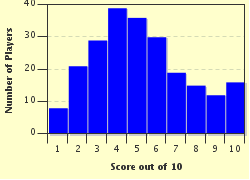Quiz Answer Key and Fun Facts
1. Most people in the middle ages ate bread as their staple food of the day.
What is the name of the dark, heavy bread that the peasants of medieval England ate?
2. Another very popular dish that the peasants ate was a soup-stew made from oats and seasonal vegetables that grew on their own land. What was the name of this stew?
3. Eating was a very popular pastime for the noblemen of England, not only for nutrition but also providing entertainment. The 1st Earl of Leicester, great friend of Elizabeth 1st of England, was notoriously known for his 19 day banquet of fun and feasting. What was his name?
4. The ground floor of a castle was where the kitchens and storerooms were located.
One of these rooms was used for storing and the dispensing of beverages such as ale. What was the name of this storeroom?
5. A vital piece of medieval cuisine was a plate cut from stale loaves of bread. These would hold food, sauces, salt and even candles during the banquet.
What name was given to this plate?
6. Which alcoholic beverage was considered a valuable source of nutrition for peasants and noblemen alike during the middle ages?
7. During the middle ages a law was passed that restricted overspending between the wealthy and lower classes. What was the name of this law?
8. Most meat in the middle ages was roasted or stewed but sometimes it was pounded into a paste, mixed with other ingredients, and served up like a meat custard. What was the name of this 14th century medieval delicacy?
9. During the festive season, a nobleman's Christmas day feast would include rich and extravagant displays of roasted meats. What was the most popular display to sit in the middle of a nobleman's Christmas table?
10. During the Christmas festivities, venison was popular among the nobility, served with a thick wheaty porridge like a side dish. What is the name of this delicacy?
Source: Author
lorstrivia
This quiz was reviewed by FunTrivia editor
WesleyCrusher before going online.
Any errors found in FunTrivia content are routinely corrected through our feedback system.


